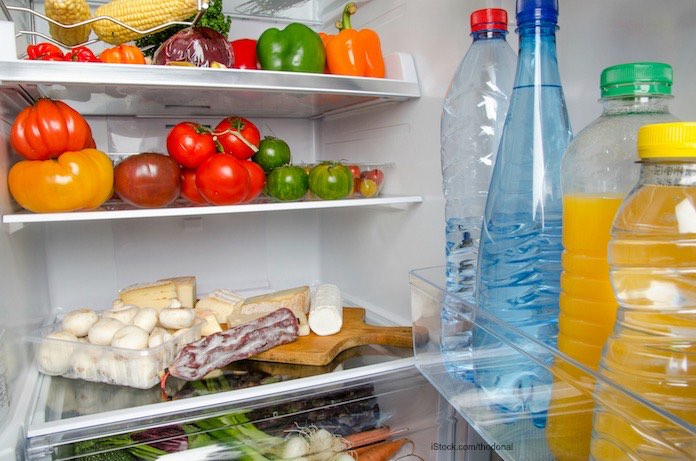The USDA has issued a chart of what foods are safe and what foods should be thrown out after a power outage. Severe weather in the southern part of the country has highlighted the importance of keeping food safe during a weather emergency. It would be a good idea to print out this chart and use it after a power outage.

Food stored in a refrigerator during a power outage should be safe as long as the power is not out for more than 4 hours, as long as the door is kept closed as much as possible.
The general categories in the USDA’s chart contain recommendations that should be followed after a power outage. They state that all meats, seafood, and poultry, and foods containing those ingredients, should be discarded.
Hard cheeses and processed cheeses will be safe, while soft cheeses, low fat cheeses, and shredded cheeses should be discarded. Butter and margarine will still be safe, while other dairy products and opened baby formula should be thrown away. Eggs, whether hard cooked or fresh, should be discarded, along with foods that contain eggs, such as quiche and custards.
Cut fruits should be thrown away, while opened fruit juices and opened canned fruits will be safe. Opened mayonnaise, tartar sauce, and horseradish should be thrown away if they are above 50°F for over eight hours, while products such as peanut butter, Worcestershire sauce, jelly, and vinegar dressings will still be safe to eat.
Refrigerator biscuits and cookie dough should be thrown away. Cooked pasta, rice,and potatoes should also be discarded. Pasta salads with mayonnaise should be thrown away, while fruit pies are safe. Cream filled pastries should be discarded.
Finally, cooked vegetables should be discarded, including baked potatoes and casseroles, soups and stews. Raw vegetables and herbs and spices are safe to keep even if they have been above 40°F for over two hours.
An interesting study conducted at the University of Massachusetts looked at the temperatures in a refrigerator during a power outage and what happened when the door was opened. They found that food placed in the bottom of the refrigerator stayed cold for the longest period of time. The temperature at that top of the refrigerator already was in the danger zone within the first hour of power loss.
The study’s authors state, “From a practical stand point this means that the temperature in the top of the refrigerator would already be in the danger zone within the first hour. So it would be advisable and prudent to store fruits on the top shelves of a refrigerator during a crisis. This also reaffirmed the fact that the cold air would be always at the bottom of the refrigerator and hence it would be the coldest part in the refrigerator; hence, the best place to store meats would be the bottom shelf of the refrigerator. ”
The study’s authors also found that the volume of food in the fridge is an important factor in determining the temperature of the food when power is lost. Large quantities and bigger containers of food should be stored together, at the bottom of the refrigerator, before emergencies occur, so they gain heat at a slower rate.
Opening the door increased the temperatures on the top shelf the fastest. The authors state that perishable food should not be stored on the top shelves of the fridge in the front. If the door is opened, the fridge will increase in temperature as much as 42% faster than if the door is not opened.
The study was performed on gallon jugs filled with water. The temperatures changes in food in a fridge with the power off may be different.




